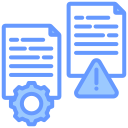Navigating Tax Compliance for Businesses in Malaysia

Corporate income tax is administered by the Inland Revenue Board of Malaysia (LHDN), while Sales and Service Tax falls under Royal Malaysian Customs. Evolving e-invoicing requirements and digital reporting expectations mean good systems are no longer optional, especially as enforcement and analytics rapidly improve.

A growing design studio in Penang delayed formal bookkeeping, assuming their small size spared them complexity. A routine desk audit arrived, and missing reconciliations triggered penalties. After implementing consistent monthly closes and documenting tax positions, they passed follow-up reviews without a single adjustment.

Are you launching a startup, expanding into new states, or handling cross-border services? Share your situation in the comments, and we’ll publish follow-on deep dives tailored to the most common hurdles raised by our readers this month.

Corporate Income Tax: From Estimates to Filing
Use rolling forecasts, not static spreadsheets, to update your tax estimate as sales shift. Revisit assumptions quarterly, document revisions, and align finance, sales, and operations so payment schedules match actual performance, reducing painful year-end top-ups and interest exposure.
Sales and Service Tax (SST): Registration and Scope
Thresholds and categories vary by activity, and timing matters once you cross them. Map your services or manufacturing activities to official guidance, monitor rolling turnover, and set alerts when you approach thresholds. Proactive registration beats backdated exposure every single time.
Sales and Service Tax (SST): Registration and Scope
Recent adjustments have expanded coverage for selected services, with some rate changes affecting pricing models and contracts. Review your service bundles, invoices, and promotional offers to ensure tax treatment is correct, and communicate clearly with customers to protect margins and trust.

Cross-Border Payments, Withholding Tax, and Treaty Relief
Fees for services, royalties, interest, or digital access can trigger withholding. The labels on invoices matter less than the substance of services provided. Evaluate where work is performed, who benefits, and what your contracts say before deciding the applicable rate and documentation.
Cross-Border Payments, Withholding Tax, and Treaty Relief
Treaty relief may reduce withholding, but only with correct forms and timely submissions. Keep beneficial ownership evidence, tax residency certificates, and contracts on file. Build a calendar that tracks expiry dates so relief doesn’t lapse quietly between renewals and project milestones.


Transfer Pricing and Related-Party Dealings

Build your policy on real functions and risks
Interview operational teams to map who does what, who bears which risks, and where key assets actually sit. Then select methods that fit reality. A tidy benchmarking study is not enough if your story on value creation does not match day-to-day operations.

Documentation that earns trust
Prepare contemporaneous local files, intercompany agreements, and clear pricing schedules. Reconcile transfer pricing outcomes to statutory accounts. When auditors see consistency across documents and management reporting, questions shrink and reviews move faster, saving time, stress, and cost.

Ask the hard question early
Are your management fees, cost-sharing, and royalties still fit for purpose after business model changes? Tell us what changed—new distribution hubs, R&D roles, or shared platforms—and we’ll publish a practical primer reflecting the most common restructuring patterns readers face.
Incentives and Reliefs: Don’t Leave Money on the Table
Before committing capital, review potential incentives for reinvestment, automation, export orientation, or green technology. Map the criteria to your project plan, and confirm documentary requirements. Many incentives reward early intent and well-kept records more than heroic year-end applications.
Incentives and Reliefs: Don’t Leave Money on the Table
Track qualifying expenditures separately, maintain vendor evidence, and align descriptions with incentive conditions. A clean ledger narrative reduces disputes years later, when teams have changed and memories have faded, but auditors still need clarity on why items qualified.



Seven-year evidence, one simple habit
Maintain searchable, well-indexed records—contracts, invoices, bank proofs, and workings. Link each tax position to supporting documents. When officers ask, you answer in minutes. That speed signals credibility and often shapes the entire tone of an audit from the start.

E-invoicing: phased rollout, practical steps
Map your customer and supplier flows, test data formats, and align ERP fields with official schemas. Pilot with a narrow transaction set, then scale. Communicate with counterparties early so both sides avoid mismatches that cause rejected documents and payment delays.
